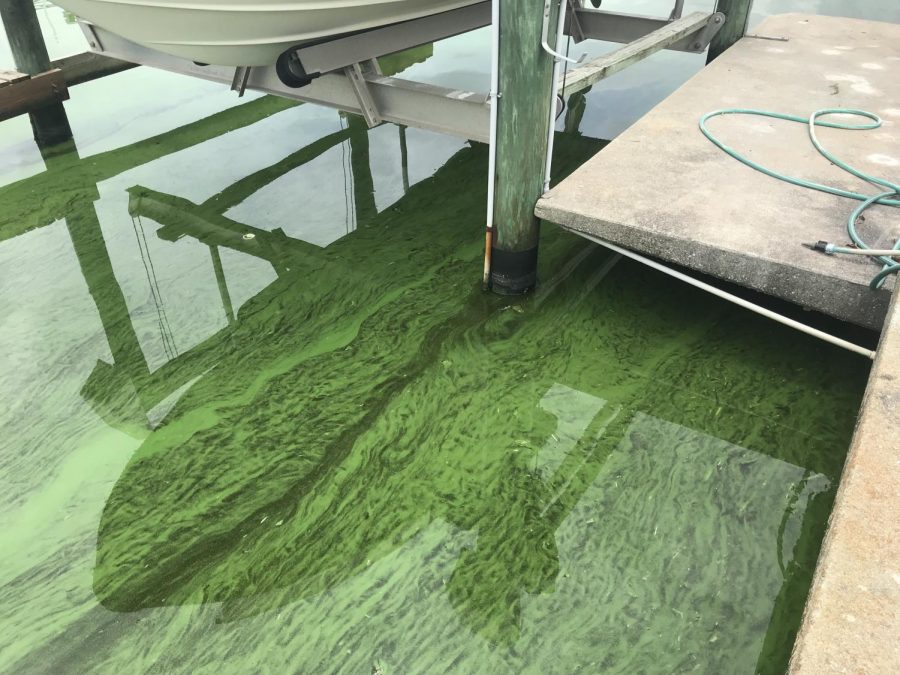Southwest Florida fertilizer ordinances hope to prevent further devastation
October 7, 2021
Southwest Florida is covered in green golf courses and manicured lawns but these features are soaked in a hidden danger: fertilizer. The use of fertilizers has been a silent killer devastating marine life, causing toxic algae blooms and impacting countless bodies of water.
The Sunshine State is not sunny year long, as the rainy season during the later months of summer heighten the chances of fertilizer run-off seeping into our water systems. Therefore, the state and local government has proposed ways to curb any excess nutrients to leak into local habitats.
Between June 1 and September 30, all residences and businesses are prohibited from using fertilizers containing phosphorus and nitrogen elements. Still, Naples has implemented tighter restrictions to protect waterways compared to Lee and Collier County.
After receiving public input supporting the reaffirmation of existing code 13-D, an ordinance overseeing fertilizer use and landscape maintenance, the Naples City Council approved the ordinance at its first reading, passing unanimously with the decision.
Director of Naples Streets and Stormwater Department Gregg Strakaluse presented the support for readopting the code first established in 2019, supporting the reaffirmation and resource protection regulating fertilizer application and how this affects the area’s water quality.
Bodies of water with less nutrients are higher in quality and have the potential to prevent habitats from dying off. Compared to the previous code, this new ordinance specifically targets regulating toxins in runoff, water pollutants and how close to a water source fertilizer can be used.
Naples has the authority to regulate the codes, making the city more restrictive than Florida’s restrictions on fertilizer.
“It’s important to note how we manage fertilizer use impacts the economy,” FGCU Professor of Marine and Ecological Sciences Dr. Edwin Everham said. “Mismanaging landscapes kills tourism, but it’s complicated when some aspects are reversible and repairable. A lot is coming from our own backyards.”
Residents of the area have noticed a difference in the water too. FGCU senior MacKenzie Henderson-Kell spends his time on FGCU’s waterfront.
“As someone who is on the water weekly, I have seen a change while kayaking or participating in other water activities,” Henderson-Kell said. “Plants and trees look tired and seeing the amount of dead marine life washing up on shore from red tide this past summer was just devastating.”
Algae blooms damage ecosystems and pose health risks to humans and wildlife, which is why it is stressed to be mindful of where excess supply drains.
“The most immediate damage that comes from over fertilizing our landscapes is that the nutrients go downstream and tend to stimulate harmful algae blooms,” Everham said. “The blooms are ephemeral. If you stop feeding algae nutrients, it’ll die out quickly.”
Fertilizing responsibly protects water resources. This is emphasized through several studies, like Dr. Everham’s article “Do You Really Need That Lawn?” which explains how environmental impacts are due to our misuse and overuse.
“The community of Southwest Florida will continue to grow until the quality of life here drives as many people away as it attracts,” Dr. Everham said in his article. “Land, water or insurance will become too expensive. Traffic or water pollution will become unacceptable. Our ecosystems or climate will degrade to the point where people are no longer attracted to our landscape.”
Information gathered from studies presented by Strakaluse supports maintaining fertilizer use through this ordinance, which has lessened run-off containing phosphorus leaking into Southwest Florida bays, rivers and the gulf.
Even though fertilizer boosts nutrient efficiency and soil organic matter, destruction begins to unravel upon our ecosystems and waterways when used in excess. Due to this, resource protection standards are stressed in this ordinance to prevent further depletion of Naples and surrounding areas’ natural and urban landscapes.
“Everything that we need has to exist at the right amount,” Everham said. “Lawn care is like that in terms of nutrients. Natural systems have resilience. There is a balance. But it takes time for things to reverse, especially if chances are given.”
























